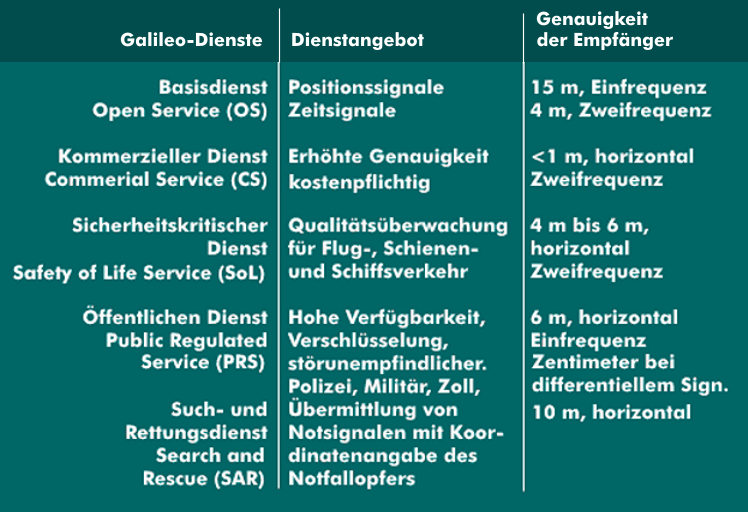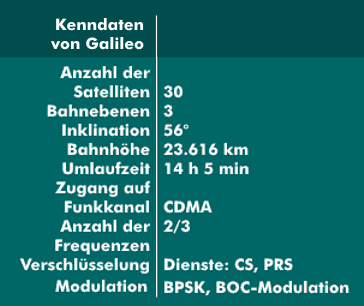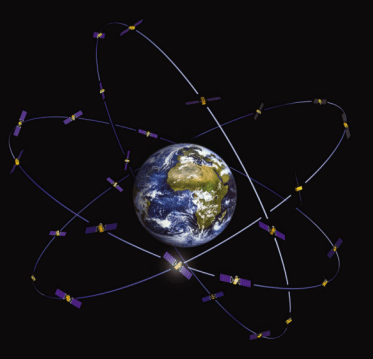Galileo
The Galileo satellite navigation system initiated by the European Union( EU) is the counterpart to the U.S. Global Positioning System( GPS). It is managed by the European Space Agency ( ESA ) and was scheduled to go into operation as early as 2009. The first launch with 18 of the planned 30 satellites took place at the end of 2016, and full commissioning with all satellites and services is scheduled for 2020.
Galileo is designed to be more accurate than the GPS system and is primarily aimed at civilian applications; it also provides more services.
The various Galileo services
According to the versatile applications, Galileo provides several different services: the open service( OS), the commercial service( CS), the safety-of-life service( SoL), the public regulated service( PRS), and the search and rescue service( SAR).
- The open service or basic service (OS) transmits time and position signals with an accuracy of 15 meters. This free service can be used for vehicle guidance systems, for example.
- In the commercial service (CS), which is characterized by an accuracy of about 1 m, reception is guaranteed even in shadowy areas of buildings or mountains.
- The safety-critical service (SoL) is specifically designed for functional monitoring of air, rail and marine traffic.
- In the Public Regulated Service (PRS), which has a local resolution of 1 m and an availability of up to 99.9%, signals are encrypted and secured against interference. This service is intended for public security agencies such as police, border guards and the military.
- The Search and Rescue (SAR) service is intended for rescue operations where signals from those seeking help are transmitted as coordinates to rescue services.
Galileo operates with 30 MEO satellites, 3 of which are reserve satellites, orbiting the Earth on three circular satellite orbits at an altitude of 23,616 km.
Galileo transmits ten navigation signals in three frequency bands.
- Band 1 for the downlink is between 1.164 GHz and 1.215 GHz,
- Band 2 between 1.260 GHz and 1.300 GHz, and
- Band 3 between 1.559 GHz and 1.593 GHz.
The frequency bands were defined by the ITU. The lowest frequency band is assigned to Radio Navigation Satellite Services( RNSS). Data rates are service- and modulation-dependent and range from 50 bit/s to a maximum of 1,000 bit/s for the commercial service with two- phase shift keying(BPSK).
In addition, Galileo is interoperable with the GPS system and Glonass, which means that even under the most unfavorable Galileo reception conditions, sufficient navigation signals can still be received from the other two navigation systems.



